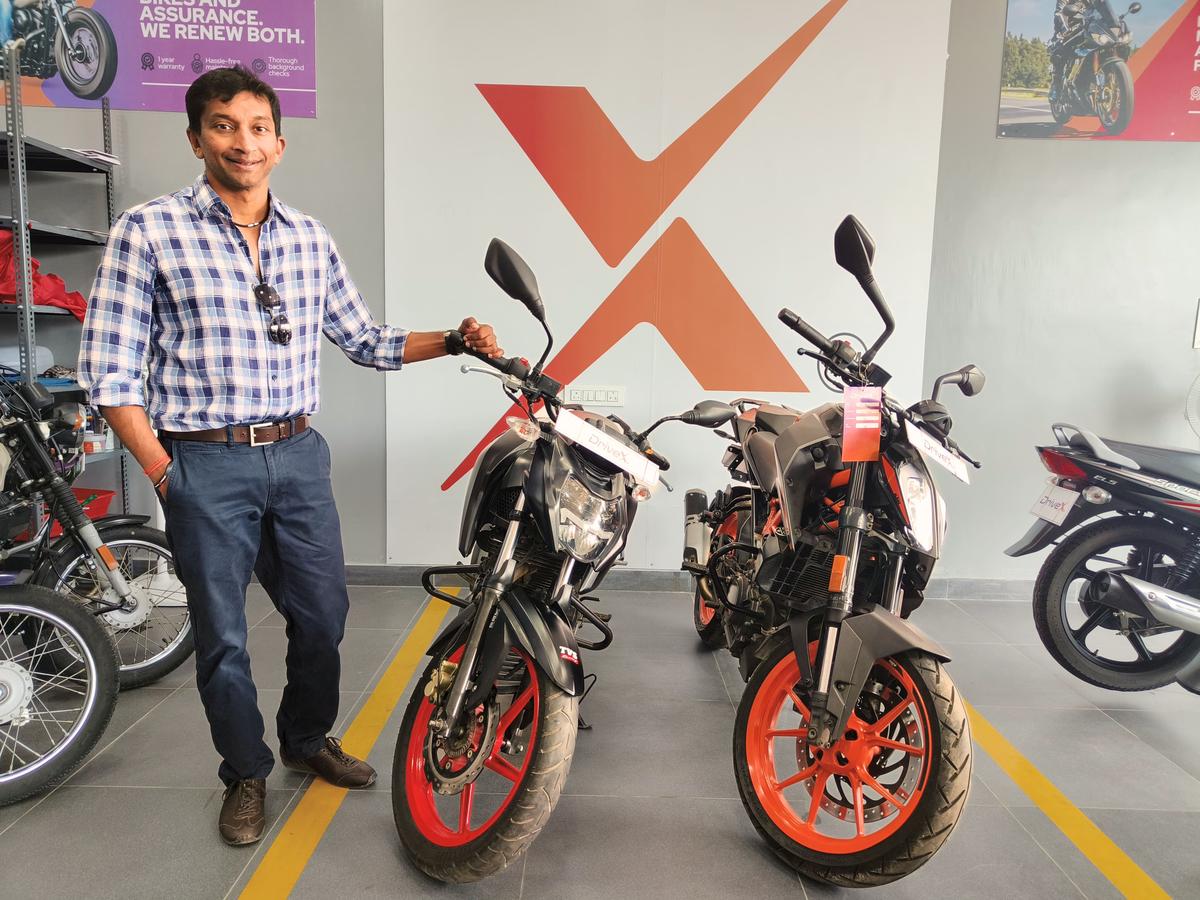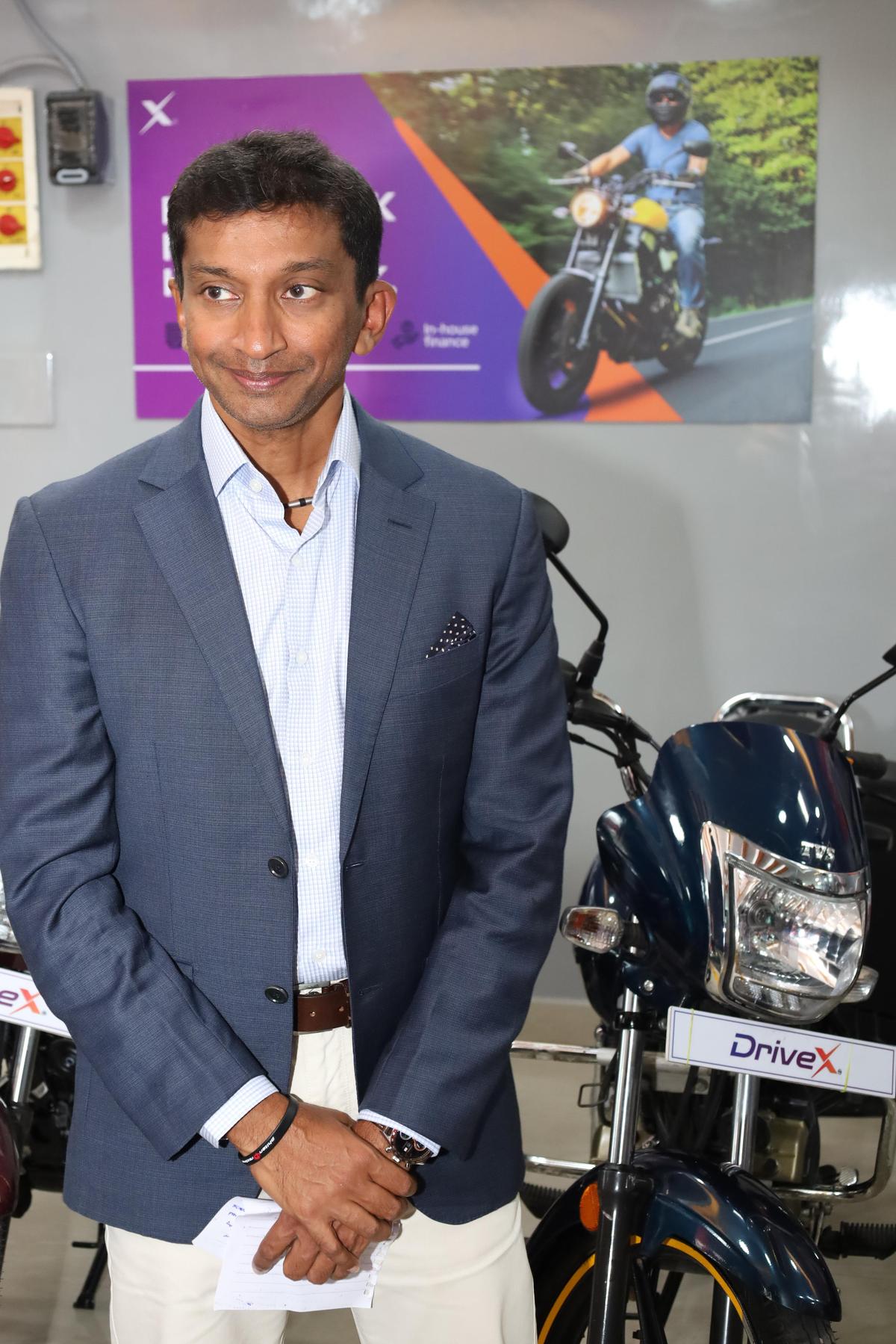It is not every day you get driven around by a Formula One racer. On a sunny Wednesday afternoon, Narain Karthikeyan, 47, was behind the wheel of his sleek black SUV, taking us on a personal tour of the Coimbatore Auto Sports and Transport Trust (CoASTT) circuit, which he helped create. Now, as an entrepreneur, smart casuals have replaced his racing gear. Instead of strategising with his team over the radio, he was discussing business with various stakeholders while driving (PSA: Don’t use the phone while driving! Narain can get away with it because, well, he is Narain and was driving on a traffic-free tarmac). As we cruised around the quiet, 3.8km bidirectional circuit, Narain shared insights into his latest venture, DriveX, a three-year-old startup focused on buying and selling pre-owned two-wheelers, looked back at his racing days, and looked forward to a glorious future for Indian motorsports.
Narain’s long and illustrious racing career extended beyond Formula One, where he became the first-ever driver from India. Until 2019, he enjoyed a successful stint in the Super GT series in Japan, representing the Honda-affiliated Nakajima Racing team and competing with renowned racers including Jenson Button. “I had a good season, competing in races with large grids and crowds. Super GT cars are incredibly fast, close to the speed of single-seaters you see in F1. I even had a first-place finish in one of the races,” he recalls.
Then, COVID-19 put the brakes on his racing — and pretty much everything.
Though Nakajima Racing offered a contract extension when Super GT resumed, Narain, now in his 40s, realised he had to make way for younger, talented racers. Like his fellow Indian F1 driver Karun Chandhok, he tried punditry. It did not suit him. He wanted something more hands-on.

Narain Karthikeyan
| Photo Credit:
Praveen Sudevan
“During the pandemic, I noticed the struggles of people who had to commute to work without safe yet affordable transportation. Entry-level scooters were too expensive, costing about a lakh. Inspired by my knowledge of the automotive industry and experience in refurbishment, I thought about offering a subscription and leasing service for used two-wheelers,” says Narain.
Thus, DriveX was born. Leveraging Narain’s strong brand value and the positive response from early customers, it quickly gained traction and secured the backing of TVS Motor Co. Today, it has evolved into a platform for purchasing pre-owned two-wheelers. According to Narain, with a customer base of 1.50 lakh, the company retails 2,100 vehicles per month and services 12,000 vehicles. It reported revenue of ₹35 crore in FY24 (compared to ₹7 crore in the previous year). The fast-growing company, headquartered in Bengaluru, has 57 retail outlets across India.
Speed and strategy
Narain’s entrepreneurial shift is not surprising, given his lineage. Hailing from the renowned PSG business house in Coimbatore, business was ingrained in his DNA. “My connection to automobiles made it natural for me to pursue a venture in the automotive industry. Also, my passion for speed and racing started with two-wheelers. When I visited my aunt in America, she gifted me a Z50 Honda. That’s what got me into racing. So, DriveX seemed like a perfect fit.”
The transition from the racetrack to the boardroom was seamless, thanks to the parallels Narain drew between the two worlds. “Business planning, like racing, is all about practicality. When your car isn’t performing, you analyse why and work with your team to optimise its performance. This approach is very similar to problem-solving and teamwork in business.”
Running a business like DriveX comes with its own challenges, but Narain remains focused and determined. “Patience is key, just as it is in racing. Maintaining a balance between aggression and caution is essential for success.”

Narain Karthikeyan
| Photo Credit:
Special Arrangement
“The most rewarding aspect has been becoming the largest tech-enabled platform for pre-owned two-wheelers. As athletes, we have an innate drive to succeed and perform at the highest level. This same motivation also drives me to strive for the top spot here.”
Looking ahead
Formula One has evolved dramatically since Narain’s racing days. For instance, the average age of Formula One TV viewers has dropped significantly from 44 to 32, making the sport more appealing to commercial brands and broadcasters. It is a reflection of F1’s digital-first approach and projects such as the Netflix documentary Drive To Survive.
This surge in popularity has also had a positive impact in India, as evidenced by the recent Chennai night street race for the Indian Racing Festival. “It was a fantastic event. It has shown that India can host world-class sporting events. We should make it a regular fixture, similar to the Macau Grand Prix,” says Narain, adding that such events are crucial for promoting motorsport in the country and attracting international attention.
“The CoASTT track in Coimbatore also has the potential to be upgraded to a faster configuration. This would allow us to attract more national and international events,” he says, “In India, two-wheeler racing has seen a surge in popularity, with teams like TVS Racing, Honda, and KTM offering opportunities for aspiring riders. Our two-wheeler racing infrastructure is more advanced than our Formula One infrastructure.”
While the current era might be more exciting for motorsport athletes in India, Narain does not regret racing in his time. “I raced during a fantastic era with drivers such as Michael Schumacher and V10 engines that roared to 18,000 RPM. While today’s cars are different, there’s something special about the classic era of F1.”
“Many sports, including F1, are becoming more entertainment-focused,” he adds, “Maintaining the core sporting element is essential. Fierce competition should always be the priority.”
In many interviews, he is asked, “Why did you become a racer?” Narain hails from a family that produced two of India’s racing stalwarts — His father, GR Karthikeyan, was a seven-time Indian National Rally champion. Sundaram Karivardhan, one of India’s racing pioneers, was a relative. So, before we get off his car, we ask him a more appropriate question: “Would you have become anything other than a racer?”
He pauses for a bit, smiles, before replying: “I’ve always loved speed. Growing up, I dreamed of becoming a fighter pilot or something. Then, it changed to racing. Despite the family support, to be India’s first Formula One driver was a monumental challenge. There were no facilities, cutting-edge tracks, or infrastructure to support such a dream. It was like trying to become a world-class downhill skier in the Sahara Desert. But despite the immense hurdles, I would do it all over again.”
Published – September 20, 2024 06:35 pm IST

